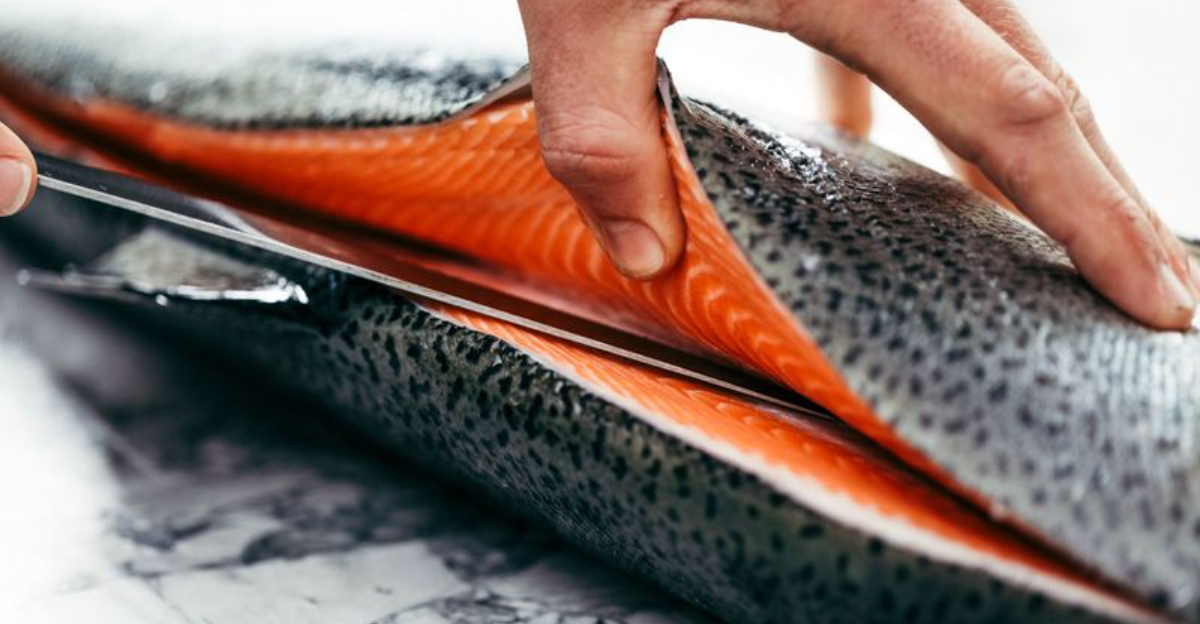Every Type of Salmon, Ranked From Worst To Best

Salmon is one of the most popular fish on dinner plates around the world. Not all salmon are the same, though, as some varieties offer richer flavor and better nutrition than others.
Whether you’re shopping at the fish counter or ordering at a restaurant, knowing the difference between salmon types can upgrade your dining experience.
1. Chum Salmon (Keta): The Budget Option
Pale and lean, chum salmon sits at the bottom of the salmon hierarchy. Its mild, almost watery flavor makes it less desirable for fancy dinners.
Most chum ends up as pet food, jerky, or smoked products where seasonings mask its bland profile. The real prize is actually the roe (eggs), which is harvested for sushi restaurants.
While not a culinary superstar, chum remains a sustainable choice from Alaskan waters.
2. Pink Salmon (Humpback): Canned Classic
Ever opened a can of budget salmon? You’ve likely met pink salmon. With the palest flesh and lowest fat content of all salmon species, pink salmon lacks the rich flavor profile of its cousins.
Food producers typically can this variety rather than selling it fresh. Its neutral taste makes it perfect for salmon patties where herbs and spices do the heavy lifting.
While it won’t impress at a dinner party, pink salmon remains affordable and accessible year-round.
3. Atlantic Salmon: The Farm-Raised Standard
The salmon you’ll most commonly find at supermarkets isn’t wild at all. Atlantic salmon dominates the market because it’s farm-raised year-round, offering consistent availability and pricing.
I remember visiting a Norwegian salmon farm during college – the massive underwater pens stretched across the fjord like underwater cities. The guide explained how they’ve been improving environmental practices.
While Atlantic salmon offers good omega-3 levels, its flavor remains milder than wild varieties. Newer land-based farms are addressing environmental concerns.
4. Coho Salmon (Silver): The Versatile Middle Child
Coho strikes the perfect balance in the salmon world. Not too rich, not too lean – just right for most cooking methods. Its moderate fat content gives it a pleasant flavor that won’t overwhelm delicate recipes.
Chefs love coho for its versatility – it holds up beautifully for grilling whole or smoking. The medium-firm texture flakes nicely without falling apart.
When wild Atlantic salmon isn’t available, coho makes an excellent substitute that won’t break the bank.
5. Sockeye Salmon (Red): The Vibrant Powerhouse
That stunning deep red color isn’t food coloring – it’s sockeye’s natural hue. The intense crimson flesh comes from its diet rich in astaxanthin, a powerful antioxidant.
Back when I worked at a seafood restaurant in Seattle, customers would gasp when we’d bring out sockeye dishes. The bold, almost wild flavor profile makes sockeye unmistakable.
Bristol Bay in Alaska produces the world’s largest certified-sustainable wild sockeye fishery, making this nutritional powerhouse an environmentally sound choice.
6. King Salmon (Chinook): The Undisputed Champion
Buttery. Luxurious. Melt-in-your-mouth. King salmon earns its royal name with the highest natural fat content and omega-3 levels of any salmon species.
Its large flakes and rich texture make it the favorite of high-end chefs and salmon connoisseurs. The flavor is so decadent that simple preparation methods work best – just salt, pepper, and a quick sear.
Wild king stocks are limited, so look for ASC-certified farmed king from open-water pens in New Zealand for a sustainable splurge.
